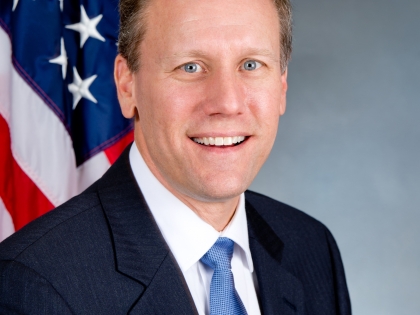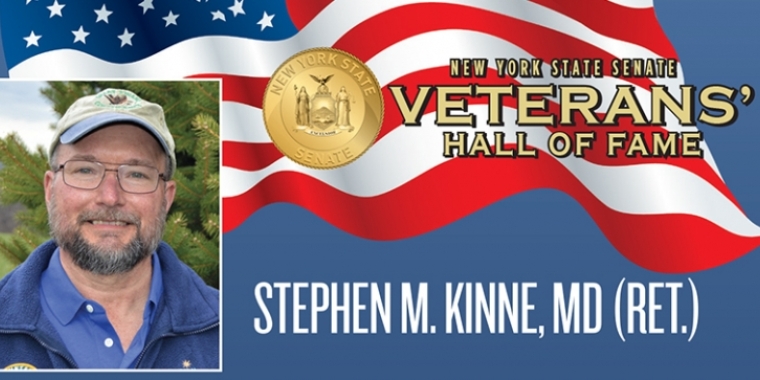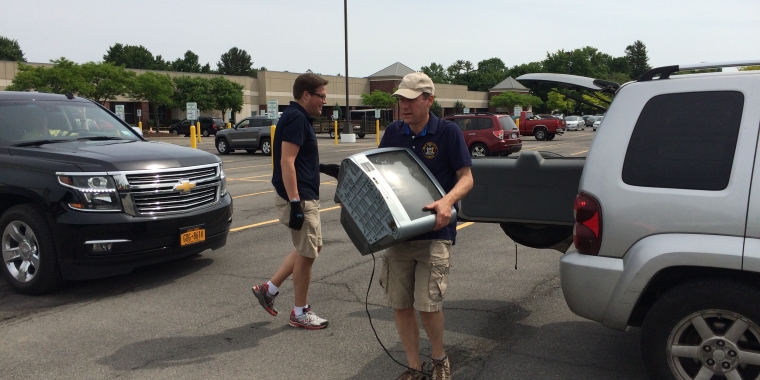
In Major Victory for Upstate, Governor Signs Valesky-Sponsored Historic Rehabilitation Tax Credit
David J. Valesky
July 29, 2009
-
ISSUE:
- Economic Development
- Housing
SYRACUSE, N.Y.—In a significant victory for Upstate New York, Governor Paterson today signed into law the Historic Rehabilitation Tax Credit (HRTC), sponsored by Senator David J. Valesky (D-Oneida), that will encourage development, stimulate economic growth and improve the quality of life in cities like Syracuse and Utica.
“This program has the potential to transform the economic landscape of Upstate New York at a time when we need it most,” Senator Valesky, Vice President Pro-Tempore of the State Senate, said. “Investment in our urban cores and villages will stimulate the kind of economic activity necessary to rebuild the Upstate economy, brick by brick.”
“This is a major win for all of Upstate New York. I want to thank Assemblyman Sam Hoyt for sponsoring this legislation in the Assembly, and Governor Paterson for recognizing its importance and signing it into law,” Senator Valesky said.
The tax credit will provide incentive for developers to undertake projects that repurpose historic structures in distressed communities, including much of Upstate’s urban cores. In the past generation, commercial and residential growth has shifted away from cities and villages, creating vacant, underutilized and deteriorating areas, making it difficult to attract and retain new investment, new businesses and new residents.
The rejuvenation the program will promote has the potential to drastically and broadly change the Upstate economy, helping to reverse the population change and encouraging growth that will decrease the strain on property taxpayers.
“This program is exactly what is needed to spur redevelopment of our Upstate urban cores,” Senator Valesky said. “By providing tax credits that will make Upstate projects more attractive to developers, we are creating a business-friendly climate which will draw developers back to our Upstate cities and villages, reignite economic activity on our Main Streets, and bring people and businesses back to our communities.”
The HRTC strengthens the state’s program first launched in 2006 and will make New York State more competitive against the nearly 30 other states with similar programs which have seen significant economic stimulus as a result, leveraging $3 to $5 dollars for every state dollar invested.
Specifics of the program include:
• Increasing the cap on commercial credit value from $100,000 to $5 million; the residential credit value will increase from $25,000 to $50,000.
• Limiting the availability of the residential and commercial credit of the program to “distressed” areas, which is defined as being located within a Census tract identified at or below one hundred percent of the median family income.
• Increasing the percent of qualified rehabilitation costs that can be claimed for the credit from 6 percent to 20 percent, allowing for a higher percentage of qualified rehabilitation costs.
• Making the credit assignable, transferable, and conveyable within business partnerships, to allow for greater flexibility on the part of the investor, and attract out-of-state financing to in-state rehabilitation projects.
• Offering the rehabilitation tax credit as a rebate to make the program a stronger financial incentive for homeowners without significant income tax liability.
Additional quotes in support of the Historic Rehabilitation Tax Credit:
“These laws will create a better quality of life for communities across Upstate New York. Our existing historic buildings are a tremendous asset to our neighborhoods, and we will now see significant resources directed to making these structures vibrant and essential again. New York State is making a strong commitment to creating investment in a strong future by using the resources from our past,” Assemblymember Sam Hoyt (D-Buffalo), sponsor of the Assembly version of the legislation, said.
“We have every reason to believe that the New York State Rehabilitation Tax Credit will prove one of the most effective economic and community development programs in the state,” said Jay DiLorenzo, President of the Preservation League of New York State, the not-for-profit organization that led the charge for enhanced tax credits. “We are enormously grateful to Assemblymember Hoyt and Senator Valesky for shepherding this important Smart Growth initiative through their respective houses and to the leadership of the Senate and the Assembly for their vision in passing this legislation. We thank New York’s mayors, county executives and other municipal leaders who have shown unwavering support for this effort. Finally, we express our great admiration for Governor Paterson for signing these historic tax credits into law today.”
“The enhanced New York State historic rehabilitation tax credit provides a significant stimulus that will enable pivotal downtown redevelopment projects to move forward,” said Robert M. Simpson, president and CEO if of the Metropolitan Development Association of Syracuse and Central New York. “By signing this legislation into law, Governor Paterson has given Syracuse, and all of our region’s urban cores, an essential reinvestment tool that will spur economic development across the state.”
“This bill represents a rare opportunity to breathe new life into New York State’s historic urban cores,” said Ben Walsh, Executive Director of the New York State Urban Council. “The expanded historic rehabilitation tax credit program will produce a predictable and reliable economic development incentive that will target private investment and job growth in the distressed communities that need it most.”
Mayor Matthew Driscoll, of Syracuse, in thanking Governor Paterson for signing the Historic Tax Credit Bill into law, emphasized that “this legislation will give Upstate cities a vital new tool to encourage the restoration of vacant or underutilized buildings in our core areas. The bottom line is that this legislation will give us resources that will close the financial gap on our downtown revitalization.”
##
Share this Article or Press Release
Newsroom
Go to NewsroomSen. Valesky’s Sixth Annual Free Senior Fair is October 19 in Madison County
September 25, 2018
Harmful Algal Blooms: What to Know, How to Report
June 29, 2018

Stephen M. Kinne, MD (Ret.)
May 15, 2018

